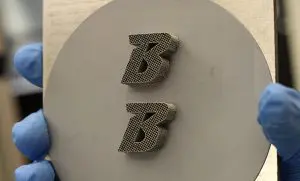The power electronics industry has reached the theoretical limits of silicon and now is moving to other semiconductor materials whose performance meets the requirements of today’s high power density systems. A number of techniques are being used to overcome the thermal limitations of power modules. One approach is using semiconductor materials which are able to bypass Si’s … [Read more...]
High-loading Graphene Composites Enhance Thermal Conductivity
It is well known that incorporating graphene fillers to the base (matrix) of a composite thermal interface material (TIM) can improve the resulting thermal conductivity of the composite. In fact, the intrinsic thermal conductivity of large graphene layers exceeds that of the high-quality bulk graphite, which itself is very high: 2000 W m−1 K−1 . But most of the studies of … [Read more...]
Analog Devices’ µModule Regulator Eases Data Center Cooling Requirements
Figure 1 Analog Devices LTM4700 combines high power with the energy efficient performance needed to reduce data center cooling requirements. To reduce data center infrastructure cooling requirements step-down DC/DC power regulators must combine high power with energy efficient performance. To that end Analog Devices has expanded its suite of Power by Linear … [Read more...]
New Way to Cool Data Center Chips Uses Laser Metal Printing
Figure 1: Researchers tested their technique by printing the Binghampton Univeristy logo with a 3D metal laser printer. Traditionally, electronics are cooled using a heat sink that transfers heat into the air or a liquid coolant. For the heat sink to work, it has to be attached to the CPU or the graphics processor via a thermal interface material, which helps facilitate the … [Read more...]









